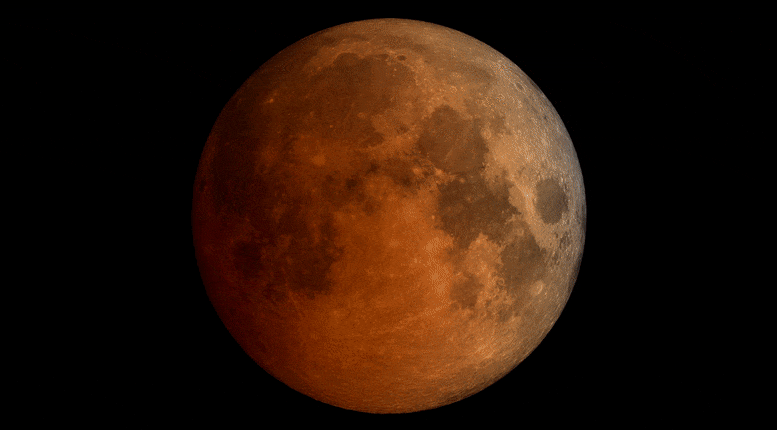The upcoming solar eclipses in 2023 and 2024 will pass through several locations in the United States, with both eclipses causing partial solar eclipses across the contiguous US. A map, created by Michala Garrison of NASA’s Scientific Visualization Studio, details both the annular solar eclipse on October 14, 2023, and the total solar eclipse on April 8, 2024, along with shaded bands indicating where partial solar eclipses can be observed. The map was designed to be functional while also aesthetically pleasing, to encourage people to witness the eclipses in person. The map incorporates data from several NASA sources, such as Earth elevation data from the Shuttle Radar Topography Mission and the Moon’s shape maps from the Lunar Reconnaissance Orbiter. Furthermore, the positions of the Sun, Moon, and Earth were calculated using software and data from NASA’s Navigation and Ancillary Information Facility.
NASA Releases New Map of Upcoming Solar Eclipses in 2023 and 2024 in the United States
NASA has released a new map that showcases the upcoming solar eclipses in 2023 and 2024 in the United States. Developed by NASA’s Scientific Visualization Studio (SVS) in partnership with the NASA Heliophysics Activation Team (NASA HEAT), the map details the paths of the Moon’s shadow as it crosses the contiguous U.S. during the annular solar eclipse on October 14, 2023, and the total solar eclipse on April 8, 2024.
The dark paths that cross the continent show where viewers must be to witness the “ring of fire” when the Moon blocks all but the outer edge of the Sun during the annular eclipse and the ghostly-white outer atmosphere of the Sun (the corona) during the total eclipse. The map also shows where and how much the Sun will be partially eclipsed by the Moon outside those paths. On both dates, all 48 contiguous states in the U.S. will experience at least a partial solar eclipse, along with most of Canada and Mexico.
The Annular and Total Eclipse Paths
The paths of the annular and total eclipse appear as dark bands across the U.S. on NASA’s new eclipse map. If the skies are clear, individuals located in the annular eclipse path, from Oregon to Texas, will have a chance to see the annular eclipse. In contrast, individuals located in the total eclipse path, from Texas to Maine, will have a chance to witness the total eclipse, weather permitting.
Moreover, there is an area of Texas near San Antonio, where the two eclipse paths cross, that will experience both the annular eclipse in 2023 and the total eclipse in 2024.
How to Read the Map
On the map, the paths of the annular and total eclipses appear as dark bands. Inside those dark paths are oval shapes with yellow ovals for the annular eclipse and purple ovals for the total eclipse. These ovals indicate the shape of the Moon’s shadow cast on Earth’s surface at the times shown. Those located inside the ovals will see the annular eclipse or total eclipse at that specific time.
Overall, this map is an excellent resource for people looking to witness the upcoming solar eclipses. With its detailed information and easy-to-follow format, NASA’s eclipse map is an ideal tool for anyone planning to observe the 2023 annular solar eclipse and the 2024 total solar eclipse in the United States.
Detailed Information on Solar Eclipse Paths and Percentages
NASA has released a new map that provides details on the upcoming solar eclipses in 2023 and 2024 in the United States. The map showcases the paths of the Moon’s shadow as it moves across the contiguous U.S. during the annular solar eclipse on October 14, 2023, and the total solar eclipse on April 8, 2024.
The Movement of the Moon’s Shadow
During both eclipses, the Moon’s shadow will move rapidly across the U.S. On the map, ovals within the eclipse paths indicate the location and shape of the shadow at different times. For instance, during the total eclipse on April 8, 2024, the Moon’s shadow will be over Dayton, Ohio, at 3:10 p.m. EDT. However, by 3:20 p.m. EDT, the shadow will have moved to Buffalo, New York.
Duration of Eclipses
The duration of the annular or total eclipse will depend on the location within the path. The closer to the center of the eclipse path, the longer the eclipse will last. Inside each path are white lines that indicate how long annularity or totality will last. For the annular eclipse path, labels ranging from 3 to 4.5 minutes can be found near the Nevada-Utah border in the north and between San Antonio and Corpus Christi, Texas, in the south. For the total eclipse path, labels can be found near Presque Isle, Maine, in the north, and between the 2:20 and 2:25 p.m. CST ovals in Mexico in the south.
On the map, each eclipse path includes white lines that indicate how long that eclipse will last at different locations. For example, the annular phase of the eclipse will last about four minutes near Elko, Nevada, and about four and a half minutes near Richfield, Utah.
Partial Eclipse
Locations outside the paths of the annular or total eclipse will not experience a total or annular solar eclipse. However, viewers may still see a partial eclipse. Lines that run parallel to each path indicate how much of the Sun will become covered by the Moon during the partial eclipse. For the annular eclipse, these lines appear as faint yellow, and for the total eclipse, they are faint purple. Percentage labels for the annular eclipse lines appear along the left and top edges of the map, while the percentage labels for the total eclipse appear along the bottom and right edges of the map.
Outside of the eclipse paths, purple and yellow lines on the map indicate the percentage of the Sun that will become covered by the Moon at different locations for the total and annular eclipses, respectively. For instance, the purple line that passes near New York City and Providence, Rhode Island, indicates that the Sun will become about 90 percent obscured in those cities during the peak of the eclipse on April 8, 2024.
With the detailed information provided by NASA’s new eclipse map, viewers across the United States can plan their observations for the upcoming solar eclipses in 2023 and 2024.
NASA’s Map Shows the Global Path of 2023 and 2024 Eclipses
NASA has released a new map that details the path of the Moon’s shadow during the annular solar eclipse on October 14, 2023, and the total solar eclipse on April 8, 2024. The map, designed by Michala Garrison, a member of the Scientific Visualization Studio (SVS) at NASA’s Goddard Space Flight Center, includes a globe that shows the global path of both eclipses.
Paths of the Eclipses
The annular eclipse, indicated in yellow and black, extends into Mexico, Central America, and South America, while the total eclipse, indicated in purple and black, also crosses Mexico and northeastern Canada. Shaded bands in yellow and purple also indicate where a partial eclipse can be seen. Southeastern Alaska will experience a partial eclipse in October 2023, while Hawaii will have the opportunity to see a partial eclipse in April 2024.
Map Design and Data Sources
Garrison used her background in geography and cartography to create the map, incorporating information from various NASA sources. The Shuttle Radar Topography Mission provided Earth elevation information, while Lunar Reconnaissance Orbiter supplied maps of the Moon’s shape. The positions of the Sun, Moon, and Earth were determined using software and data from NASA’s Navigation and Ancillary Information Facility. Ernie Wright, Garrison’s SVS colleague, used this information to calculate the location and shape of the Moon’s shadow.
Unique Features
To add a unique feature to the map, Garrison included nighttime imagery of Earth from NASA’s Black Marble along the path of the 2024 total eclipse. Black Marble shows city lights on the night side of the planet as imaged by the Suomi NPP spacecraft. Garrison’s aim was to inspire people to experience the paths of the annular and total eclipses, something she did not do the last time the Moon’s shadow crossed the continental U.S.
Overall, the new NASA map provides valuable information on the global path of the 2023 and 2024 eclipses, inspiring people to observe these incredible events from the ideal locations.
In 2023 and 2024, two solar eclipses will take place in the United States. The annular solar eclipse on October 14, 2023, will form a “ring of fire” in the sky from Oregon to Texas, while on April 8, 2024, a total solar eclipse will darken skies from Texas to Maine. During both eclipses, all 48 contiguous states in the United States will witness a partial solar eclipse. A map created using data from various NASA sources shows both eclipse tracks as dark bands. Outside of these paths, yellow and violet lines indicate how much of the Sun the Moon will obstruct during a partial eclipse. This video zooms in on different sections of the map to show these and other features that describe what viewers across the country can expect during each eclipse. Michala Garrison, a member of the Scientific Visualization Studio, worked on the map, incorporating data from NASA’s Navigation and Ancillary Information Facility and Blue Marble. She revised the map several times to make it both aesthetically pleasing and practical to help both on and off-trail viewers plan their eclipse experience. Garrison’s goal was to inspire people to observe the annular and total eclipses from the paths they take.
Don’t miss interesting posts on Famousbio










